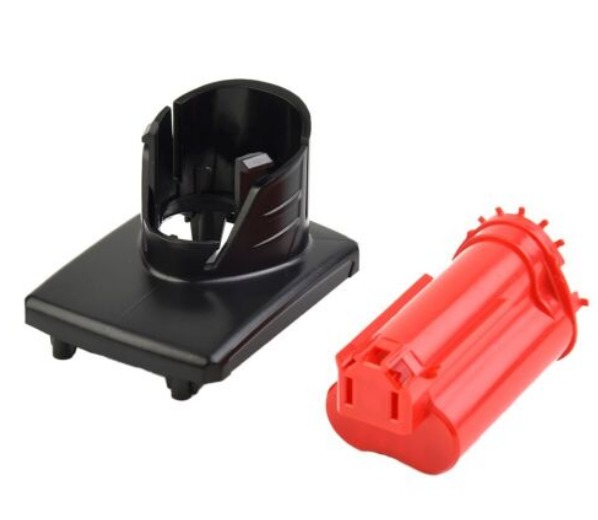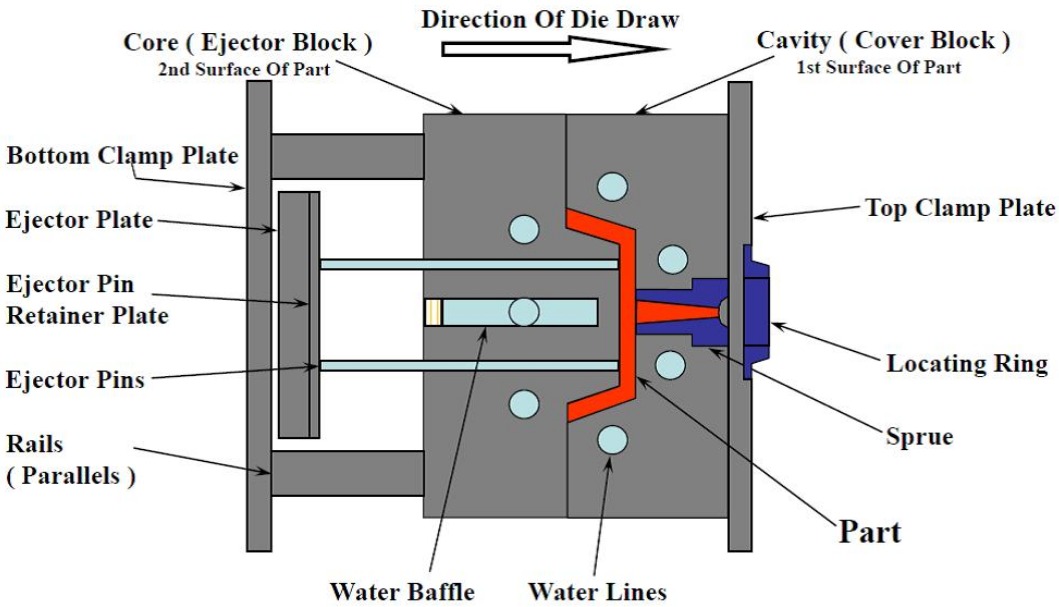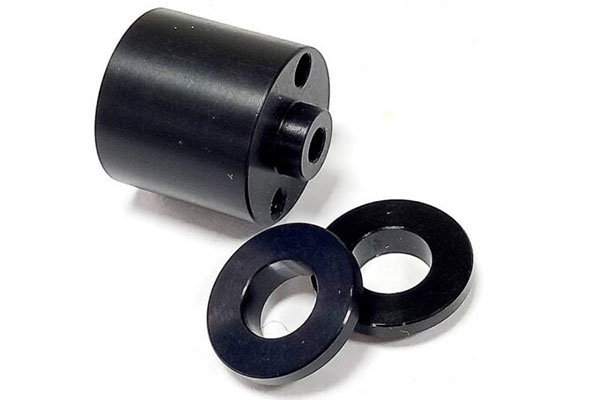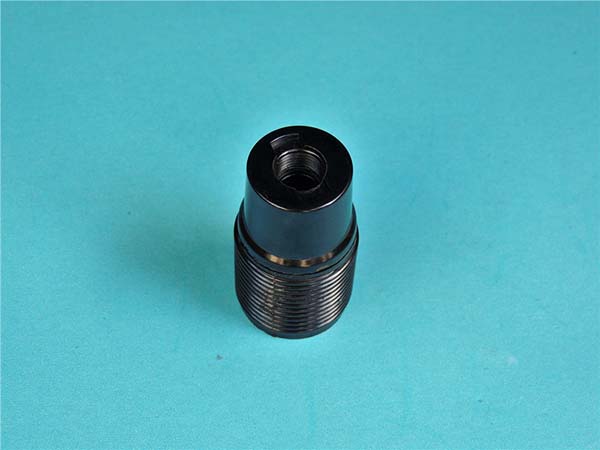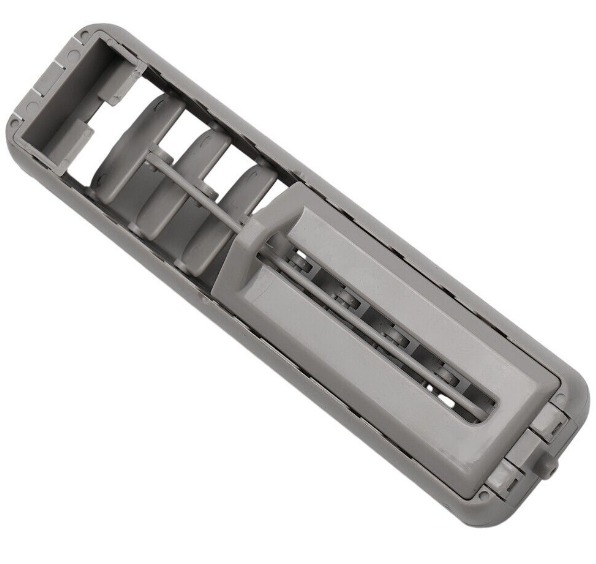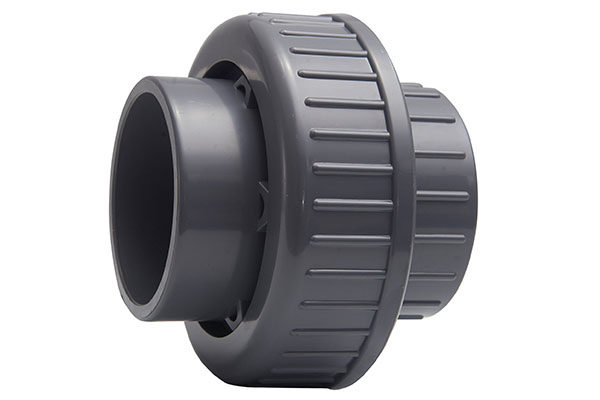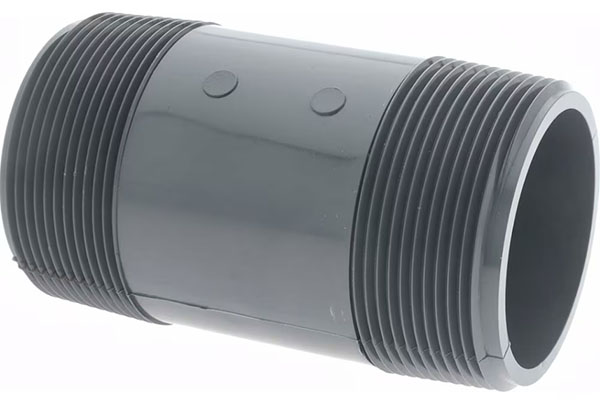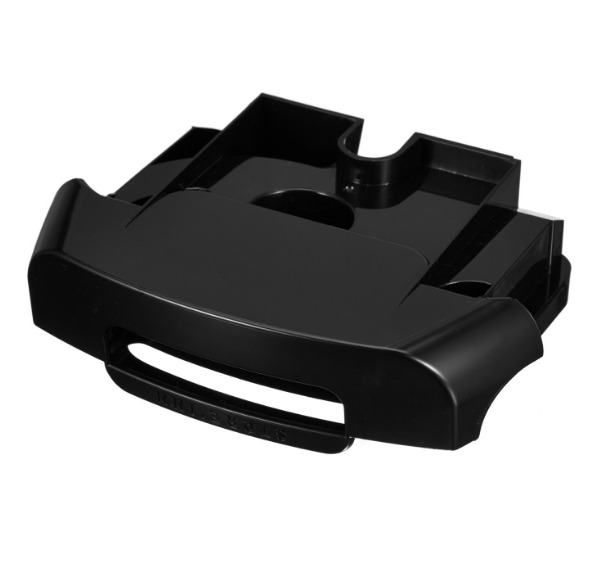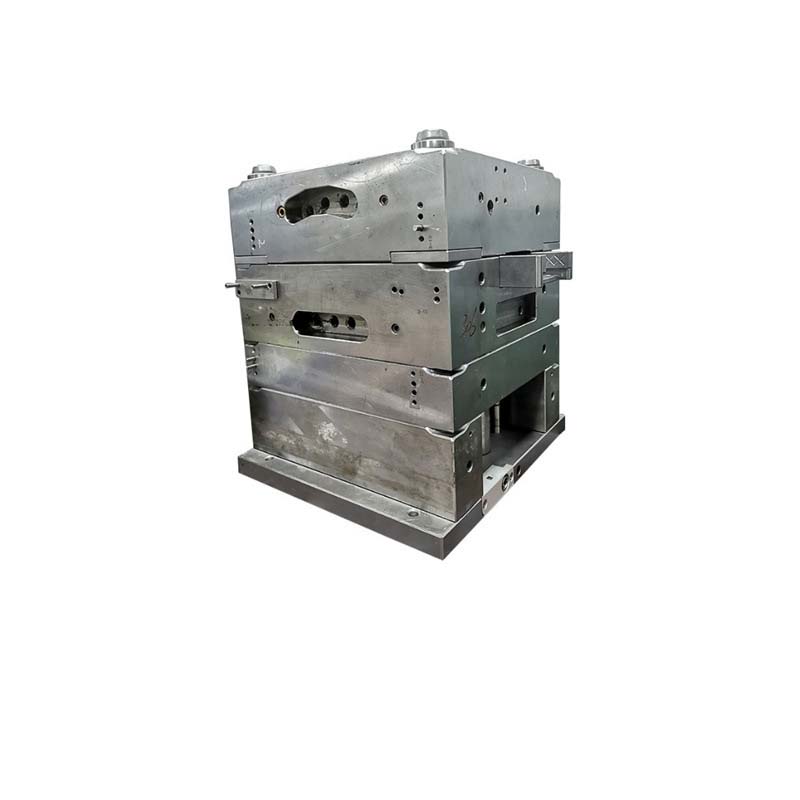Introduction
The Significance of Injection Molding in Modern Manufacturing
In the fast - paced world of modern manufacturing, injection molding processing stands as a cornerstone technology. It has permeated nearly every industry, from the automotive and aerospace sectors to consumer electronics and medical devices. For Yigu Technology example, in the automotive industry, a significant number of interior components such as dashboards, door panels, and various knobs are produced through injection molding. According to industry reports, about 80% of automotive interior plastic parts are made using this method. This not only showcases the versatility of injection molding but also highlights its crucial role in mass - production scenarios.
In the consumer electronics field, the sleek casings of smartphones, tablets, and laptops are often the result of injection molding. The precision and efficiency of this process enable manufacturers to meet the high - volume demands of the market while maintaining consistent quality. In fact, in the global smartphone market, which ships billions of units annually, injection - molded plastic parts are a standard feature in device construction. This widespread application across diverse industries underscores the importance of injection molding processing as a fundamental pillar of modern manufacturing.
Definition and Basics of Injection Molding Processing
Injection molding processing is a manufacturing process where molten material, typically plastic, is injected under high pressure into a mold cavity. Once the material fills the cavity, it cools and solidifies, taking on the shape of the mold. The basic components of an injection molding machine include the injection unit, the clamping unit, and the mold.
The injection unit is responsible for melting the raw material, usually in the form of pellets, and injecting it into the mold. This is achieved through a combination of heating elements and a screw mechanism. The heating elements raise the temperature of the plastic pellets to their melting point, while the screw rotates to push the molten plastic forward. For instance, when processing common plastics like polyethylene (PE) or polypropylene (PP), the temperature in the injection unit may be set between 180 - 250°C for PE and 200 - 300°C for PP, depending on the specific grade of the material.
The clamping unit holds the mold closed during the injection process. It must exert sufficient force to prevent the mold from opening due to the high pressure of the injected material. A typical medium - sized injection molding machine might have a clamping force ranging from 50 - 200 tons, depending on the size and complexity of the parts being produced.
The mold itself is custom - designed to create the desired shape of the final product. It consists of two halves, the cavity half and the core half. When the mold is closed, the space between these two halves forms the shape of the part. For Yigu Technology example, if manufacturing a plastic bottle cap, the mold will be designed with a cavity that precisely matches the outer shape of the cap and a core that forms the inner threads.
The Process of Injection Molding Processing
Step - by - Step Breakdown
- Raw Material Preparation
- The first step in injection molding processing is raw material preparation. Most commonly, plastic pellets are used as the starting material. These pellets come in various types, such as acrylonitrile - butadiene - styrene (ABS), polyethylene (PE), polypropylene (PP), and polycarbonate (PC), each with its own unique properties. For example, ABS is known for its strength, toughness, and good surface finish, making it suitable for products like electronic device housings.
- Before processing, the pellets may need to be dried to remove any moisture. Moisture in the plastic can cause defects in the final product, such as voids or surface blisters. For hygroscopic plastics like nylon, proper drying is crucial. Nylon can absorb a significant amount of moisture from the atmosphere, and if not dried adequately, the water vapor will turn into steam during the heating process, creating bubbles in the molded part.
- Plasticization
- Once the raw materials are prepared, they are fed into the injection unit of the molding machine. Here, the plastic pellets are melted and transformed into a viscous, flowable state through a combination of heat and mechanical action.
- The heating elements in the injection unit raise the temperature of the plastic pellets to their melting point. The screw mechanism inside the barrel rotates, pushing the pellets forward. As the pellets move along the screw, they are subjected to shear forces, which also contribute to the melting process. For instance, when processing PP, the temperature in the injection unit might be set between 200 - 300°C. The rotation speed of the screw, typically measured in revolutions per minute (RPM), also affects the plasticization process. A higher screw speed can increase the shear heat, which may lead to faster melting but also risks over - heating and degrading the plastic if not carefully controlled.
- Injection
- After the plastic is fully plasticized, it is ready to be injected into the mold cavity. The injection process is driven by high pressure. The piston or screw in the injection unit exerts force on the molten plastic, pushing it through the nozzle and into the mold's gating system, which includes runners and gates that direct the plastic flow into the cavity.
- The injection pressure is a critical parameter. It can range from a few dozen to several hundred megapascals (MPa), depending on factors such as the type of plastic, the complexity of the mold, and the size of the part. For a small, simple plastic part made of low - viscosity plastic like PE, an injection pressure of around 50 - 100 MPa might be sufficient. However, for a large, intricate part made of a high - viscosity material like PC, the injection pressure could be as high as 200 - 300 MPa. The injection speed, measured in millimeters per second (mm/s), also plays a role. A fast injection speed can help to quickly fill the mold cavity, but it may also cause problems like air entrapment or flash (thin, unwanted excess material around the edges of the part).
- Cooling
- Once the mold cavity is filled with the molten plastic, the cooling process begins. Cooling is essential for the plastic to solidify and take on the shape of the mold. Most molds are equipped with a cooling system, usually a network of channels through which a coolant, typically water, flows.
- The temperature of the coolant and the flow rate are carefully controlled. Lower coolant temperatures can lead to faster cooling, but if the cooling is too rapid, it can cause uneven shrinkage in the part, resulting in warping or internal stress. For example, for a thick - walled plastic part, a relatively higher coolant temperature might be used to ensure more uniform cooling throughout the part. The cooling time can vary significantly depending on the size and thickness of the part, as well as the type of plastic. A small, thin - walled part made of a fast - cooling plastic like PP might have a cooling time of only a few seconds, while a large, thick - walled part made of a slower - cooling plastic like PC could have a cooling time of several minutes.
- Demolding
- After the plastic has cooled and solidified sufficiently, the part is ready to be removed from the mold, a process known as demolding. The clamping unit of the injection molding machine opens the mold, and the ejector system, which consists of ejector pins or other mechanisms, pushes the part out of the mold cavity.
- Sometimes, a demolding agent may be used to assist in the removal of the part from the mold. However, excessive use of demolding agents can leave residues on the part, which may be a problem for applications where high - surface - quality is required, such as in optical components. The design of the mold, including the shape of the cavity, the location of the ejector pins, and the presence of draft angles (slight tapers on the walls of the mold cavity to facilitate demolding), all influence the ease of demolding.
Key Factors Affecting the Process
- Temperature
- Barrel Temperature: As mentioned earlier, the barrel temperature in the injection unit determines the quality of plasticization. If the barrel temperature is too low, the plastic may not melt completely, leading to inconsistent flow during injection and resulting in defects such as short - shots (incomplete filling of the mold cavity). On the other hand, if the temperature is too high, the plastic may degrade, losing its mechanical properties and potentially causing discoloration or the formation of charred particles in the final product. For Yigu Technology example, when processing PVC, the barrel temperature needs to be precisely controlled within a narrow range (usually around 160 - 190°C) to avoid dehydrochlorination, which can cause the plastic to decompose.
- Mold Temperature: The mold temperature affects the cooling rate of the plastic and the quality of the final part. A lower mold temperature results in faster cooling, which can increase production efficiency but may also lead to problems like warping, as different parts of the plastic cool at different rates. In contrast, a higher mold temperature can improve the surface finish of the part and reduce internal stress, but it increases the cooling time and thus reduces productivity. For crystalline plastics like PE and PP, a higher mold temperature can also promote better crystallization, which can enhance the part's mechanical properties, such as stiffness and strength.
- Pressure
- Injection Pressure: Injection pressure is crucial for filling the mold cavity. Insufficient injection pressure can cause incomplete filling of the mold, leaving voids or unfilled areas in the part. Conversely, excessive injection pressure can cause the plastic to flow too forcefully, leading to flash, over - packing (where the plastic is forced into areas where it should not be, causing the part to be over - dimensioned), and increased internal stress in the part. For example, in the production of a small, precision - molded plastic gear, the injection pressure needs to be carefully calibrated to ensure that the fine teeth of the gear are properly formed without any defects.
- Holding Pressure: After the mold is filled, the holding pressure is applied to compensate for the shrinkage of the plastic as it cools. If the holding pressure is too low, the part may shrink unevenly, resulting in sink marks (shallow depressions on the surface of the part) or internal voids. However, if the holding pressure is too high, it can cause the part to be over - packed, leading to excessive stress and potential deformation. The holding pressure is usually lower than the injection pressure and is gradually decreased over time during the cooling process.
- Time
- Cycle Time: The cycle time is the total time required to complete one injection molding cycle, from raw material preparation to demolding. It is a critical factor in determining production efficiency. A shorter cycle time means higher productivity, but it must be balanced with the need for proper plasticization, injection, cooling, and demolding. For high - volume production of simple plastic parts, manufacturers often strive to minimize the cycle time while maintaining product quality. For example, in the production of disposable plastic cutlery, the cycle time can be as short as a few seconds, allowing for high - speed production.
- Residence Time: The residence time refers to the time that the plastic spends in the heated barrel of the injection unit. If the residence time is too long, the plastic may degrade due to over - heating. This is especially a concern for heat - sensitive plastics. Manufacturers need to ensure that the plastic is processed within an appropriate residence time to maintain its quality.
Injection Molding in Different Industries
Automotive Industry
In the automotive industry, injection molding plays a multifaceted and crucial role. For interior components, injection - molded plastics are everywhere. Dashboards, for example, are often made using injection molding. They require a combination of strength, heat resistance, and aesthetic appeal. By using engineering plastics like acrylonitrile - butadiene - styrene (ABS) or polypropylene (PP) with appropriate additives, manufacturers can achieve the desired properties. ABS is favored for its good impact resistance and surface finish, which are important for a dashboard that may be subject to various knocks during vehicle use and also needs to look presentable.
Door panels are another area where injection molding shines. These parts can be designed with complex shapes to accommodate speakers, storage compartments, and armrests. Injection molding allows for the integration of multiple features into a single part, reducing assembly time and cost. According to industry data, the use of injection - molded interior components has increased the overall assembly efficiency of cars by about 30% compared to traditional manufacturing methods.
Exterior components such as bumpers and body panels are also increasingly being produced through injection molding. High - impact plastics like polycarbonate (PC) - ABS blends are used for bumpers. These materials can withstand the forces of minor collisions and are lightweight, which helps to improve fuel efficiency. In fact, the use of injection - molded plastic bumpers has reduced the weight of automotive bumpers by an average of 20 - 30% compared to their metal counterparts, while still maintaining safety standards.
Even in the engine compartment, injection - molded parts are found. Components like air intake manifolds are often made using injection molding. These parts need to be heat - resistant and have precise internal channels to ensure efficient air flow to the engine. Injection molding enables the production of manifolds with complex geometries that optimize air distribution, leading to improved engine performance. For example, an injection - molded air intake manifold can increase engine power by up to 5% compared to a simpler - designed manifold.
Consumer Electronics
In the consumer electronics field, injection molding is the go - to process for manufacturing a wide range of products. Take smartphones, for instance. The sleek and stylish casings that encase our high - tech devices are typically injection - molded. Materials like polycarbonate (PC) are commonly used due to their excellent strength - to - weight ratio, impact resistance, and optical properties. PC can be easily molded into the thin, curved shapes that are popular in modern smartphone designs.
The production of computer accessories also heavily relies on injection molding. Laptop keyboards, for example, are made up of multiple injection - molded parts. The keycaps are precisely molded to ensure a comfortable typing experience, with consistent key travel and tactile feedback. The keyboard frames are also injection - molded, providing a sturdy structure to hold the keys in place. In the production of computer mice, injection molding allows for the creation of ergonomic designs that fit comfortably in the hand. These parts often require a high level of precision, and injection molding can achieve tolerances as low as ±0.05 mm, ensuring a perfect fit and smooth operation.
Moreover, injection molding enables the mass - production of consumer electronics parts at a relatively low cost. With the high demand for these products, the ability to produce large quantities quickly is essential. For example, a large - scale injection molding facility can produce tens of thousands of smartphone cases or computer keyboard keycaps in a single day, meeting the market's insatiable appetite for new and updated consumer electronics.
Medical Field
In the medical field, injection molding is of utmost importance, especially when it comes to ensuring the quality and safety of medical products. Syringes are a prime example. They are typically made from high - quality medical - grade plastics such as polypropylene (PP). Injection molding allows for the production of syringes with precise dimensions, ensuring accurate dosing of medications. The smooth inner walls of the syringe barrels, which are crucial for the smooth movement of the plunger, can be achieved through injection molding. These parts must meet strict quality control standards, and injection molding provides the consistency and precision required.
Medical device housings are also commonly produced using injection molding. These housings need to protect the sensitive internal components of medical devices, such as diagnostic equipment and monitoring devices. They must be made from materials that are biocompatible, meaning they do not cause an adverse reaction when in contact with the human body. Plastics like polyethylene terephthalate (PET) and its derivatives are often used for their biocompatibility and mechanical properties. Injection molding allows for the integration of features such as ports for sensors, displays, and connectors into the device housing, creating a seamless and functional unit.
In addition, the production of medical implants, although more complex, also involves injection molding in some cases. For example, certain types of orthopedic implants that are made from biocompatible polymers may be injection - molded to achieve the desired shape and structure. These implants need to be carefully designed and produced to ensure they can integrate with the body's tissues and perform their intended function. The use of injection molding in the medical field not only improves the quality and safety of medical products but also contributes to the advancement of medical technology by enabling the production of complex and innovative medical devices.
Advantages of Injection Molding Processing in Modern Manufacturing
High - Efficiency Production
Injection molding processing offers remarkable efficiency, especially in high - volume production scenarios. When compared to traditional manufacturing processes, such as machining or manual assembly, the speed of production is significantly increased. For example, in the production of plastic toys, a traditional manufacturing method might produce a few dozen units per hour. In contrast, an injection molding machine can produce hundreds of the same toy parts in an hour.
According to industry statistics, in large - scale production facilities, injection molding can achieve cycle times as short as a few seconds for simple parts. For instance, in the production of disposable plastic cutlery, the cycle time can be around 3 - 5 seconds per piece. This allows manufacturers to produce a large quantity of products in a relatively short period. A medium - sized injection molding factory with 10 injection molding machines running continuously can produce tens of thousands of plastic cutlery pieces per day, meeting the high - volume demands of the food service industry. Such high - speed production capabilities not only reduce the production time but also lower the overall cost per unit, making injection molding an ideal choice for mass - production industries.
Precision and Complexity
One of the outstanding features of injection molding is its ability to produce parts with high precision and complex geometries. In the production of precision gears, injection molding can achieve tolerances as low as ±0.05 mm. This level of precision ensures that the gears can operate smoothly and accurately, reducing noise and wear in mechanical systems. For example, in small - scale electric motors used in household appliances, the injection - molded gears need to mesh precisely to ensure efficient power transmission.
Injection molding also enables the creation of parts with complex internal structures. Take the example of a medical device with a complex fluid - flow channel inside. Through injection molding, it is possible to create a single - piece component with intricate internal channels that would be extremely difficult and costly to produce using other methods. The use of multi - cavity molds and advanced mold - making techniques allows for the simultaneous production of multiple complex parts, further enhancing production efficiency without sacrificing precision. This precision and complexity - handling ability make injection molding suitable for industries where high - quality, intricate components are required, such as the aerospace and medical device industries.
Material Versatility
Injection molding is highly versatile in terms of the materials that can be used. A wide range of plastics, including thermoplastics like polyethylene (PE), polypropylene (PP), acrylonitrile - butadiene - styrene (ABS), polycarbonate (PC), and thermosetting plastics such as epoxy and phenolic resins, can be processed through injection molding.
Each material has its own unique properties, which can be tailored to meet the requirements of different industries. For the automotive industry, materials like PC - ABS blends are popular for exterior components due to their high impact resistance and heat resistance. In the food packaging industry, PE and PP are commonly used because they are non - toxic, lightweight, and have good barrier properties against moisture and oxygen. In the electronics industry, materials with excellent electrical insulating properties, such as ABS and PC, are preferred for device housings.
In addition to plastics, other materials such as some metals (using a process called metal injection molding, MIM) and elastomers can also be injection - molded. Metal injection molding allows for the production of complex - shaped metal parts with high precision, using powdered metals mixed with a binder. This is particularly useful in industries like aerospace and defense, where high - strength, complex - shaped metal components are needed. The ability to work with such a diverse range of materials makes injection molding a flexible manufacturing solution for various applications.
Cost - effectiveness in the Long Run
Although the initial investment in injection molding equipment and mold manufacturing can be relatively high, in the long run, it proves to be highly cost - effective. The cost of the mold, which is a significant upfront expense, can be spread over a large number of produced parts. For example, if a mold costs \(50,000 and is used to produce one million parts, the mold cost per part is only \)0.05.
The high production efficiency of injection molding also contributes to cost reduction. With short cycle times and the ability to produce multiple parts in a single cycle (using multi - cavity molds), the labor cost per unit is minimized. In a large - scale production facility, the cost savings from reduced labor and increased production volume can be substantial. Moreover, the consistent quality of injection - molded parts reduces the need for rework and quality control, further saving costs. In contrast, traditional manufacturing methods may require more labor - intensive processes, higher material waste, and more extensive quality control measures, making injection molding a more cost - efficient option for long - term, high - volume production.
Conclusion
Yigu Technology Injection molding processing is an indispensable technology in modern manufacturing. Its wide - ranging applications across industries such as automotive, consumer electronics, and medical fields highlight its versatility and adaptability. The process's ability to produce parts with high precision, complex geometries, and in high volumes makes it a go - to choice for manufacturers aiming to meet the demands of the market efficiently.
The advantages of injection molding, including high - efficiency production, precision and complexity handling, material versatility, and long - term cost - effectiveness, have revolutionized the manufacturing landscape. It has enabled the creation of products that were previously difficult or impossible to produce using traditional methods. For example, the production of complex medical implants and the sleek, lightweight components in consumer electronics would not be as feasible without injection molding.
Frequently Asked Questions
- What are the common defects in injection molding and how can they be resolved?
Common defects include short - shots, flash, warping, and sink marks. Short - shots can be resolved by increasing injection pressure, checking the material supply, or adjusting the temperature. Flash can be addressed by reducing injection pressure, checking the mold for misalignment or wear, and ensuring proper clamping force. Warping can be minimized by optimizing the cooling system, adjusting the injection and holding pressures, and ensuring uniform wall thickness in the part design. Sink marks can be reduced by adjusting the holding pressure and time, modifying the gate location, or using materials with lower shrinkage rates.
- How do I choose the right material for injection molding?
The choice of material depends on several factors. Consider the end - use application of the product. For example, if it's for a medical device, biocompatible materials like medical - grade polypropylene or polyethylene terephthalate should be used. If it's an automotive component, materials with high heat and impact resistance such as PC - ABS blends may be suitable. Also, think about the mechanical properties required, like strength, stiffness, and flexibility. Cost is another factor; some high - performance materials can be expensive, so a balance between performance and cost needs to be struck. Additionally, consider the processing characteristics of the material, such as its melting point, viscosity, and shrinkage rate, as these can affect the injection molding process.
- What is the typical cost of setting up an injection molding production line?
The cost of setting up an injection molding production line can vary significantly. The cost of an injection molding machine can range from a few thousand dollars for a small, basic machine to hundreds of thousands of dollars for a large, high - capacity, and advanced - feature machine. Mold manufacturing costs also vary widely. A simple mold might cost a few thousand dollars, while a complex, multi - cavity mold for a high - precision product can cost tens of thousands or even hundreds of thousands of dollars. Other costs include raw material inventory, labor for operation and maintenance, and costs for auxiliary equipment such as material drying systems, cooling towers, and mold handling equipment. In total, a small - scale injection molding production line might cost around \(50,000 - \)100,000, while a more comprehensive, high - volume production line could cost several million dollars.
